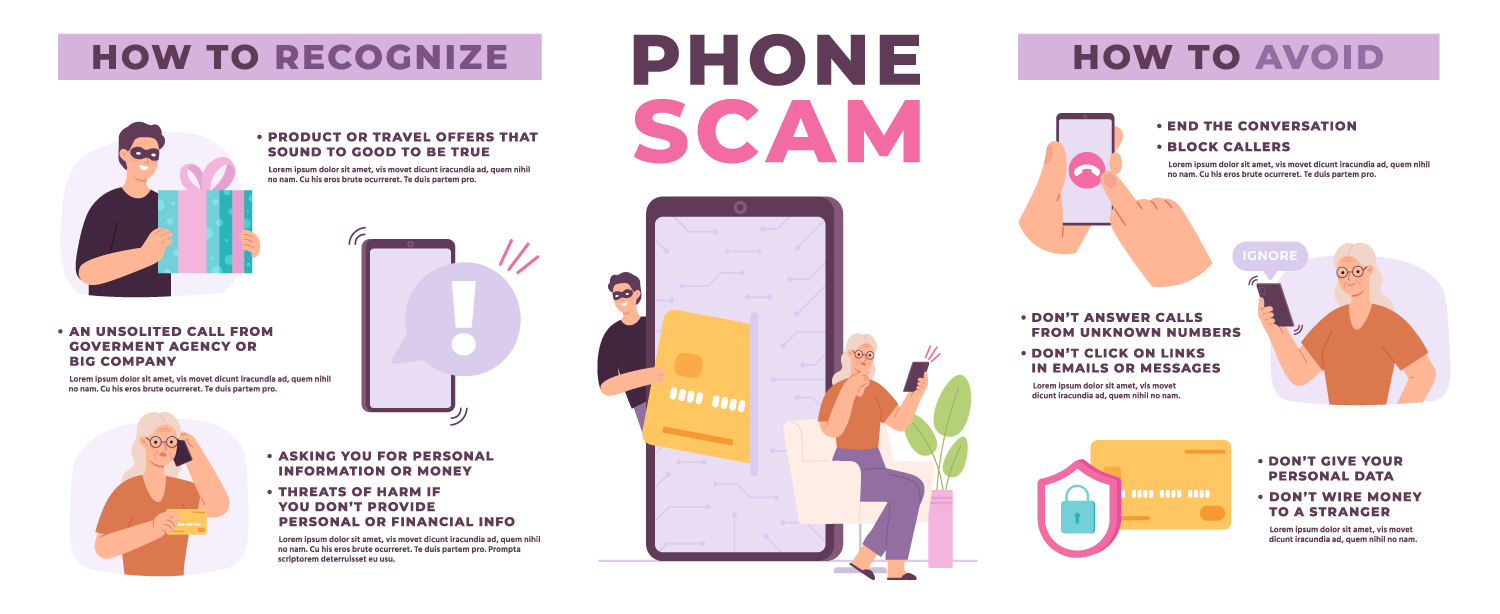
Seniors and Scams: how to avoid being a Victim
The world has changed but the fact that there is someone "out there" who wants to steal your money by deception has not. Here are some tips that will hopefully help people and prevent anyone being "scammed" out of their money.
- It’s called “phishing”.
- Become cynical, don’t believe anyone.
- Check your emotions (pictures of animals or children).
- NEVER, EVER give your credit card, bank account, SIN number, date of birth over the phone.
- NEVER, EVER email credit card details.
- Question any odd charges with credit card company.
- Check with the local RCMP.
- Don’t be afraid to say “no” or hang up on a caller.
Phone Calls
- Google and the CRA do not call you.
- "Press 1 to speak to a representative".
- “I am calling on behalf of Google”.
- You can hear a call centre in the background.
- Phone number may be “spoofed” so appears legit (e.g. 250).
- “Claim your winnings”.
- One common robocall is the “Can you hear me?” call. When the person says, “Yes”, the scammer records their voice and hangs up. The criminal then has a voice signature to authorize unwanted charges on items like stolen credit cards.
- The grandparent scam is so simple and so devious because it uses one of older adults’ most reliable assets, their hearts. Scammers call a would-be grandparent and say something along the lines of, “Hi, Grandma, do you know who this is?” When the unaware grandparent guesses the name of the grandchild the scammer most sounds like, the scammer is able to instantly secure their trust. The fake grandchild then asks for money to solve some urgent financial problem.
- Don’t call them back after one ring, it may turn out to be an expensive international call.
Phone Texts
- Charity scams (e.g. Turkey & Syria earthquake relief) play on your emotions, just visit the Red Cross website to donate.
- Block and report a text conversation in the phone itself.
- Block a contact in the phone itself.
Emails
- In your email software, check and adjust your Junk/Spam settings.
- Mark dodgy emails as spam.
- In your email software, loading images automatically triggers an “open” at the sender’s end.
- FROM EMAIL is a Gmail address.
- FROM EMAIL is slightly different (e.g. mycanadapost.co vs. mycanadapost.com).
- FROM NAME can be a family member or friend but FROM EMAIL is definitely not!
- “Your device is damaged and needs fixing”: legitimate tech support won't ever proactively seek you out to fix an issue.
- You can enable “Protect Mail Activity” at any time in iOS and iPadOS by going to ‘Settings > Mail > Privacy Protection’, then tapping to turn on Protect Mail Activity. On Mac, go to ‘Mail > Settings > Privacy’, then select Protect Mail Activity.
Resources
- https://www.fightspam.gc.ca
- Complaints about unsolicited phone calls should not be sent to the Spam Reporting Centre. They should be submitted to the CRTC through its Canada National Do Not Call List (https://lnnte-dncl.gc.ca/en).
Contact the Canadian Anti-Fraud Centre at 1-888-495-8501.

